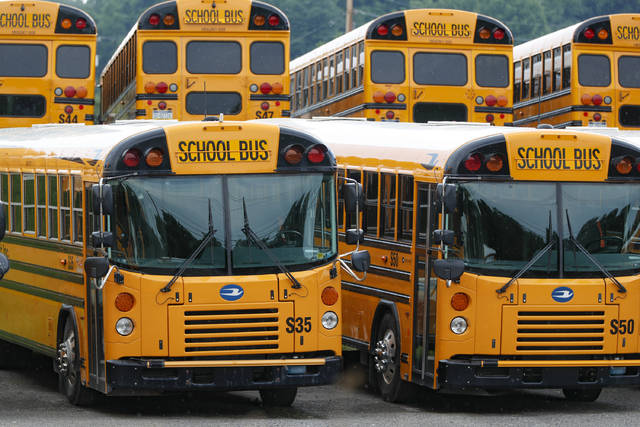Editorial: Safe buses are back-to-school basics
Going back to school doesn’t start with sitting at a desk.
It doesn’t start with putting things in a locker or even walking through the door.
For many, it starts with stepping onto a school bus. According to the Safe Routes to School Partnership, 55% of American children get to school on a bus.
That means making transportation safe is a vital part of making a transition back to in-person classroom instruction amid the coronavirus pandemic, which many school districts are committed to attempting for the 2020-21 school year.
That looks like a challenge.
A full-size school bus can fit 48 adults at two per seat or 72 children at three per seat. That is definitely not with social distancing. Three kids on a yardlong seat cannot be 6 feet apart.
School districts will face the question of how to get their kids to school and still maintain the safety standards being laid out. Would there be one student to a seat, alternating every other seat on each side of the aisle? How will that be enforced?
And if that happens, how will the number of buses be addressed? Cutting the capacity of buses by 300% or more increases how many buses would be needed, or it means additional runs would have to happen with each bus. Would the buses be cleaned between runs?
Many schools are requiring masks in common areas such as school buses and hallways, if not classrooms. How would masks be enforced on a bus full of elementary school students whose bus antics might normally run toward gross-out jokes, trading Pokemon cards or teasing and bullying? If 8-year-olds could be trusted to follow the rules without supervision, they wouldn’t need to be in school.
A bus driver is not a teacher or a warden. The job is to safely move the kid cargo from stops to school and back again. That requires keeping both eyes on the road, not on whether the mask on the kid in the sixth row is being worn over the mouth and nose.
But a recent Associated Press story pointed to problems within the government regarding driver safety.
The Pennsylvania Department of Transportation has rejected a proposal to put plastic barriers around the school bus drivers. Those kind of shields are something other employers have used to try to protect high-risk employees and valued users, like the Plexiglas shields erected at grocery stories to separate cashiers from customers.
“Our concern is we’re not aware of any study that has said this is a safe option,” PennDOT Deputy Secretary Kurt Myers said. “We’re not saying it couldn’t be safe. We’re just simply saying we’re not aware of something where somebody has looked at this.”
That’s a valid point. Maybe it would create a vision problem. So why hasn’t someone looked at it? Or why didn’t PennDOT respond with an alternative?
The school districts can’t do everything. If kids are going to be back in classrooms in August or September, that isn’t something any school district or bus company or even the Pennsylvania Department of Education is going to be able to make happen alone. It’s going to have to be a group effort, and PennDOT is going to have to be part of that.
More than half of kids ride a bus to school. Finding a way to make buses safe should be a first step in deciding if in-person instruction is possible.
Remove the ads from your TribLIVE reading experience but still support the journalists who create the content with TribLIVE Ad-Free.

